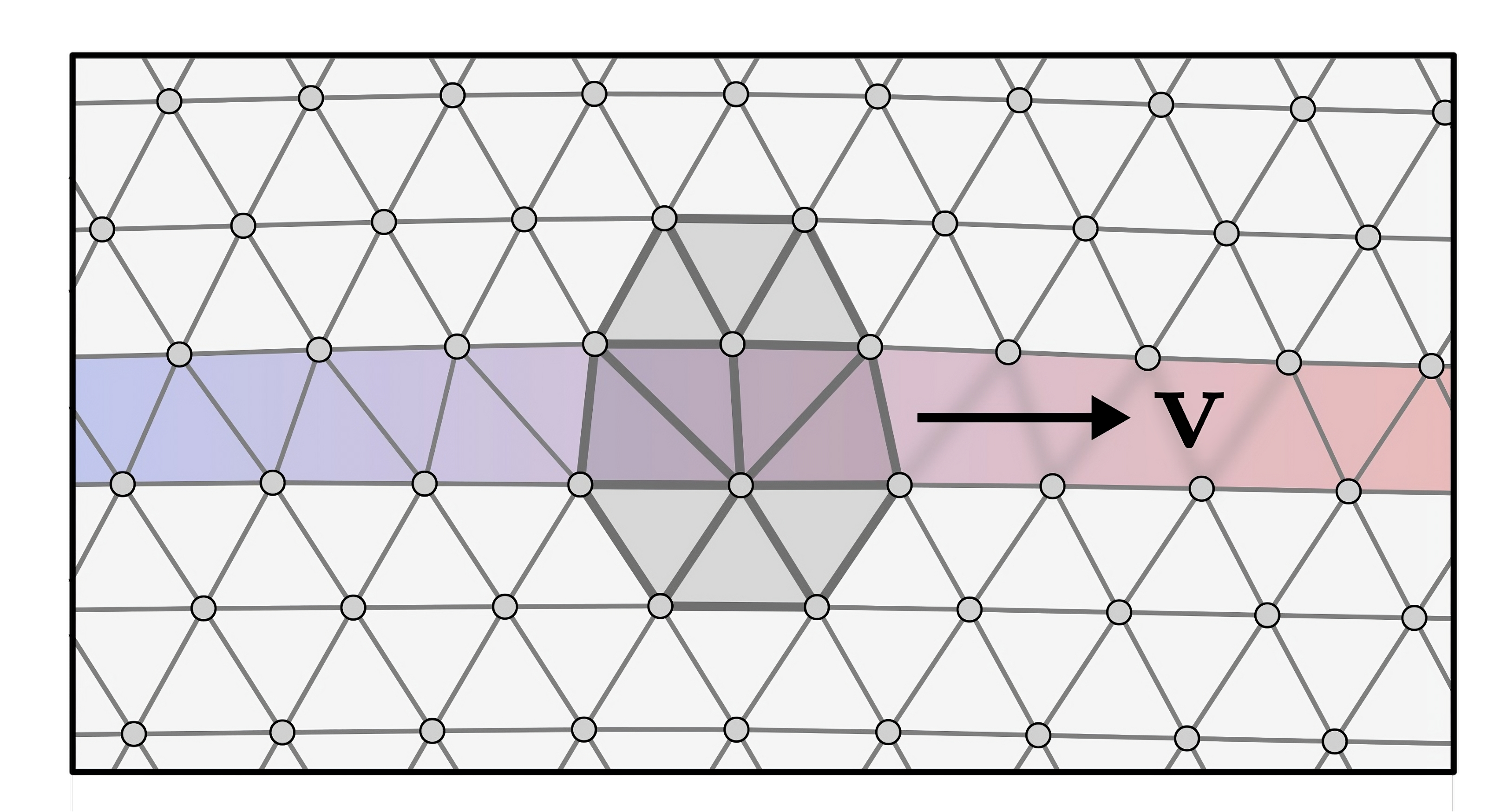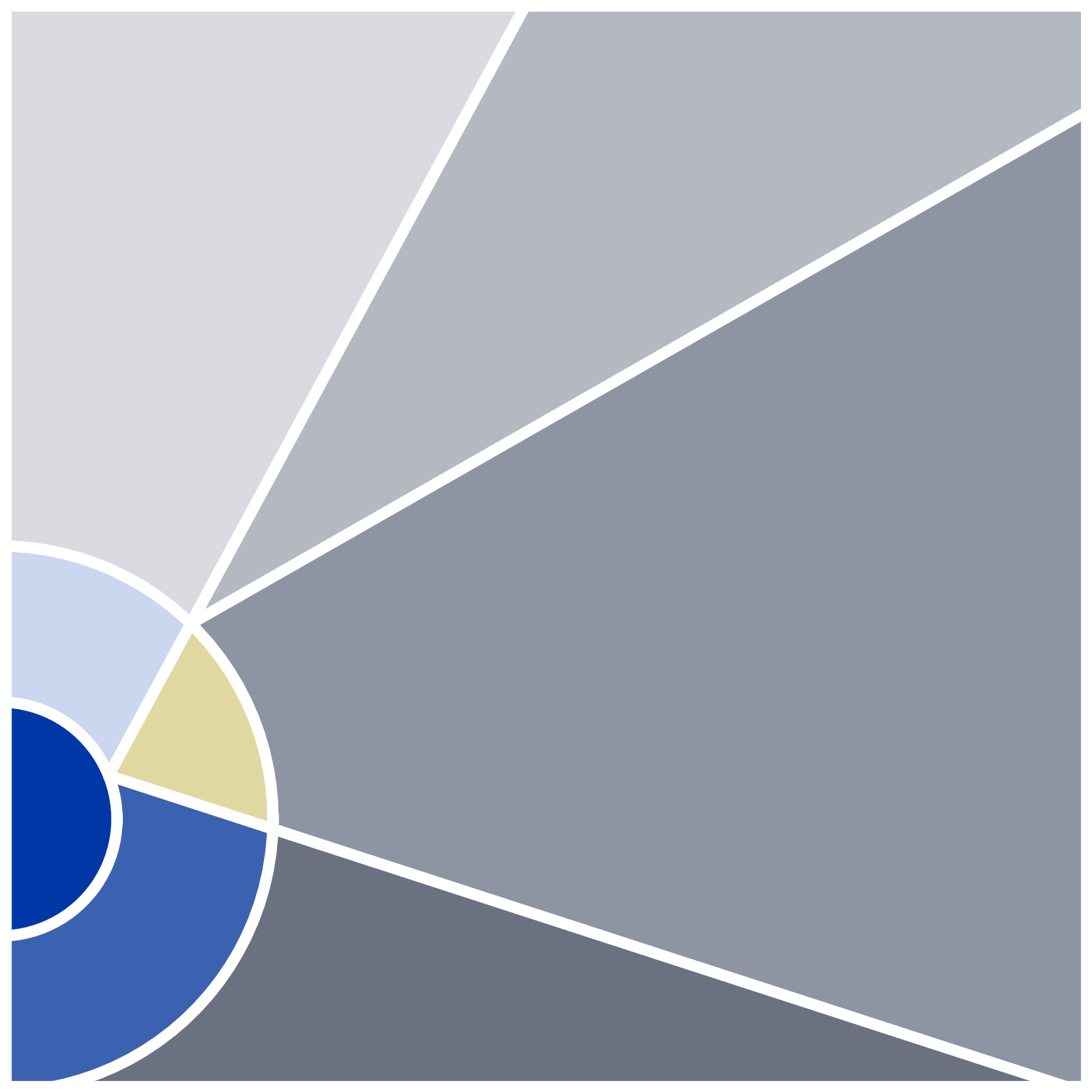
Plasticity in Odd Materials
See related publication in PRL
Crystalline materials deform under large stresses by the motion of topological defects known as dislocations. Typically, the forces between constituents of the material are central, meaning they are parallel to the vector pointing from one object to another. Non-central (or transverse) pair forces between constituents can dramatically alter how dislocations move through the material.
In this video, we show how transverse interactions can result in self-propulsion of defect cores. Moreover, the detailed form of the interaction can change how cores move, even flipping their direction of spontaneous motion.
In this video, we show how the stretching of bonds that span the glide plane of a dislocation core undergo a cycle of deformation that extracts work from the curl-containing interaction forces. This provides the motivating work for spontaneous dislocation motion.
In this video, we demonstrate how transverse forces contribute to asymmetry in bulk material properties. A column of particles is slowly compressed, and per-particle strain and neighbor bond switching is tracked. Larger magnitude transverse forces lead to larger asymmetry in the final compressed shape of the column.
